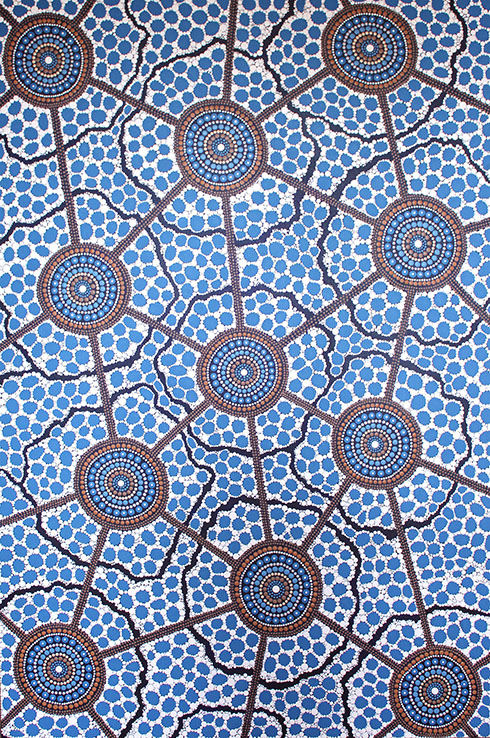 This year I have the honour of being on the Synod writing team for the Archdiocese of Brisbane. Throughout the engagement process, there has been a range of beautiful stories shared about how we can be people on mission within our community. I can’t help but share a moment of the Holy Spirit speaking to us.
This year I have the honour of being on the Synod writing team for the Archdiocese of Brisbane. Throughout the engagement process, there has been a range of beautiful stories shared about how we can be people on mission within our community. I can’t help but share a moment of the Holy Spirit speaking to us.
I gathered together a group of practical theologians, leaders and mission facilitators who were particularly passionate in the ecology and social justice space. After some time in our engagement process, I asked the group, ‘What do you think the church of the future will look like?’ I asked them to think ‘big picture’, ‘big dreaming’.
We were gathered at a table downstairs in Mercy Partners, Brisbane, with some scones and sandwiches. On the wall sits a beautiful artwork titled ‘Connected’ by Bianca Gardiner-Dodd (2019).
CONNECTED CIRCLES
The artwork has ‘Mercy Blue’ (pictured) in its earthy colour palette. Large circles, not quite perfect, are dispersed as if in constellation around the painting. The circles are connected with lines.
Mary, our Sister of Mercy, says, ‘I imagine the future of the church like that painting’. We all turn 180 degrees to see what she means. We all nod in agreement. She went on to say, ‘I see the Church as hubs, and groups, with no obvious centre but many centres, scattered but connected’. She was talking about our communities and our agencies. Each of us reaching out and creating more connections and more places for Church in our homes and workplaces.
For the group gathered, the painting depicted the early church communities of Corinth, Ephesus, Galatia and others. But now, we imagine it as our school, parish, community and workplace.
The point we all agreed on was that the way in which we live out the Gospel through the work and mission of the Church is becoming more diverse and less hierarchical. There is no ‘centre’ anymore but more gathering places that resemble the structure of the early church rather than the hierarchical structure that has developed over 2000 years.
EVERYONE’S WELCOME
We often talk of the concept of ‘table fellowship’ deriving from the idea that everyone was welcome at Jesus’ table. Eucharist and Gospel were shared around tables in the first few centuries after Jesus’ death. Our gospel communities feel as though they are transforming back to the original kitchen/dining tables and living rooms that the early church peoples gathered in. We are making space for one other to talk about faith and what is important to us. The lay community is gathering to talk about books and films, their lives, their struggles and their hurts, their hopes, dreams and joys.
The future of the Church isn’t a building with a capacity to seat 1000 people or more. It is a table with bread and wine and maybe some scones and sandwiches or cheese and fruit. It is a staffroom at a school or agency, a safe place to come and rejoice in success or mourn a failure, to lay everything out to God.
A LONGER TABLE
There is a common saying that when you are living in abundance, you should build a longer table, not a higher wall. The same applies to the Church. Although we are living in a time of collapse, it is also a time when we need abundant human connection, which can only be built with a larger table.
Our discussion continued to the different places in our lives where we found Church unexpectedly. I shared that over a period of 12 months, a small ‘Church’ community had developed where about 20 to 40 people gathered each month to watch a film that focused on a social or ecological justice topic. We gather online, we pray, we watch, we hear from an expert, we listen to one another and ask questions. This group has, for all intents and purposes, become my Church or my parish. I feel comfortable in this group of like-minded people, and we are consistently challenged by our learnings. I feel the presence of Jesus in each one of them. And we are discerning for ourselves what living the Gospel means for us in our time. Many of them sit and eat dinner while they watch the film, their laptop or iPad sitting on their dining table.
MAKE TIME
Another member of the circle shared that Church was in her ‘lunch catch-ups’, when she makes time for connection with others. I noted that the biggest difference between having lunch with another person and sitting in a church pew is where our eyes and attention are drawn. In conversation we face one another and see Jesus in the other person. In a church pew we gaze on an inanimate statue or the Eucharist.
I believe that Church or Mass or Communion is meant to be times when we connect deeply with what is alive. Our church buildings are a constant dead reminder of our anthropocentrism and the resources that we have dug up to ‘build a bigger wall’. Our focus on the building disconnects us from each other, from Earth and from God.